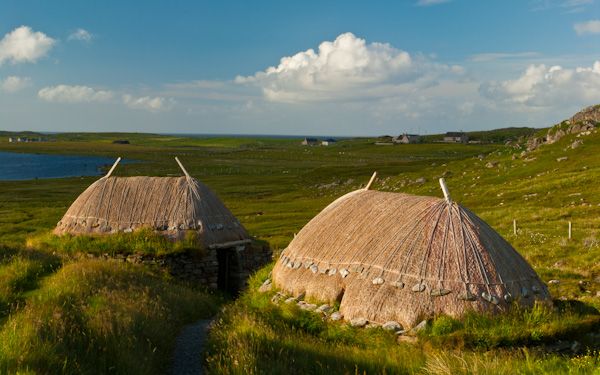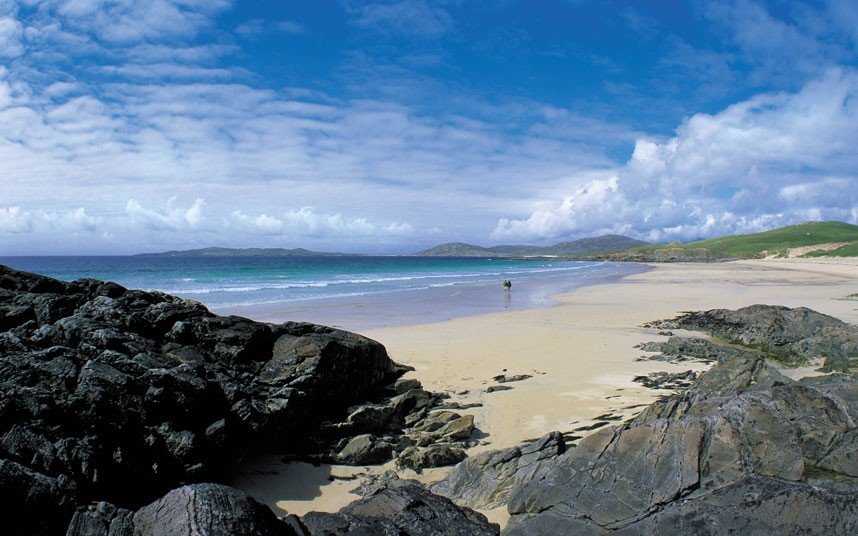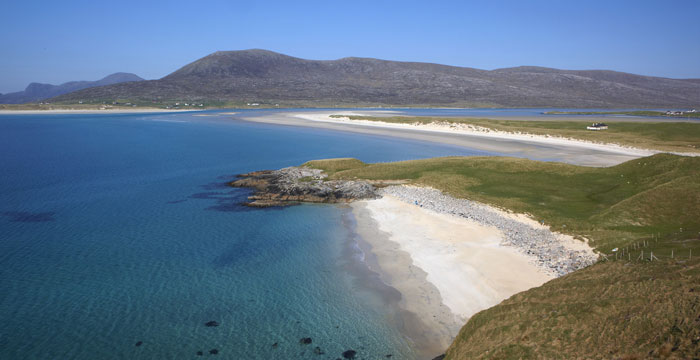Lewis and Harris (Scottish Gaelic: Leòdhas agus na Hearadh) in the Outer Hebrides make up the largest island in Scotland. The island is the third largest in the British Isles, after Great Britain and Ireland.
Geography
The northern part of the island is called Lewis, the southern is Harris and both are frequently referred to as if they were separate islands. The boundary between Lewis and Harris is where the island narrows between Loch Resort (Reasort) (opposite Scarp) on the west and Loch Seaforth (Shiphoirt) on the east (north of the more obvious narrowing of the island at Tarbert).
The island does not have a common name in either English or Scottish Gaelic and is referred to as 'Lewis and Harris', 'Lewis with Harris', 'Harris with Lewis' etc. Rarely, the collective name of the Long Island (Scottish Gaelic: an t-Eilean Fada) is used, although this is normally applied to the entire Outer Hebrides.
Most of Harris is very hilly, with more than thirty peaks above 1,000 ft (300 m) high and seven mountains, defined as Corbetts. It has an area of 841 square miles (2,178 km2) – slightly under one per cent of the area of Great Britain. It is 24 miles (39 km) from the nearest point of the mainland, from which it is separated by the Minch.
Lewis is comparatively flat, save in the south-east, where Ben More reaches 1,874 ft (571 m), and in the south-west, where Mealasbhal 1,885 ft (575 m) is the highest point.
Until 1975, Lewis belonged to the county of Ross and Cromarty and Harris to Inverness-shire. The entire island group now belongs to Comhairle nan Eilean Siar, the Western Isles Council.
History
The island is the ancestral homeland of the Highland Clan MacLeod, with those individuals on Harris being referred to as from the clan MacLeod of Harris or MacLeod of MacLeod, and those on Lewis being referred to as from the clan MacLeod of Lewis.
Lewis is also the ancestral home of Clan Morrison.
The Lewis chessmen are a famous collection of 12th-century chess pieces, carved from walrus ivory and mostly in the form of human figures, which were discovered in Uig in 1831.














